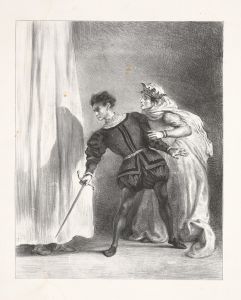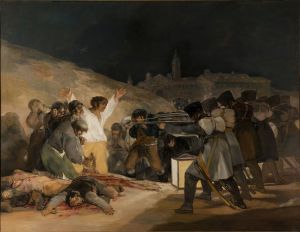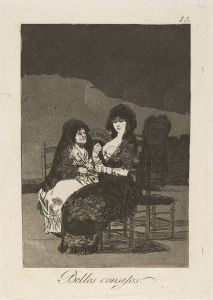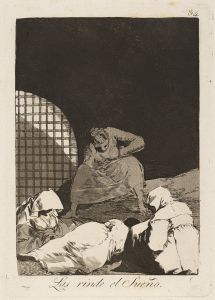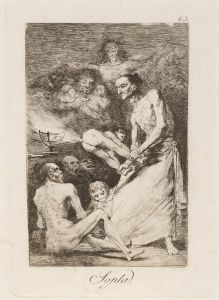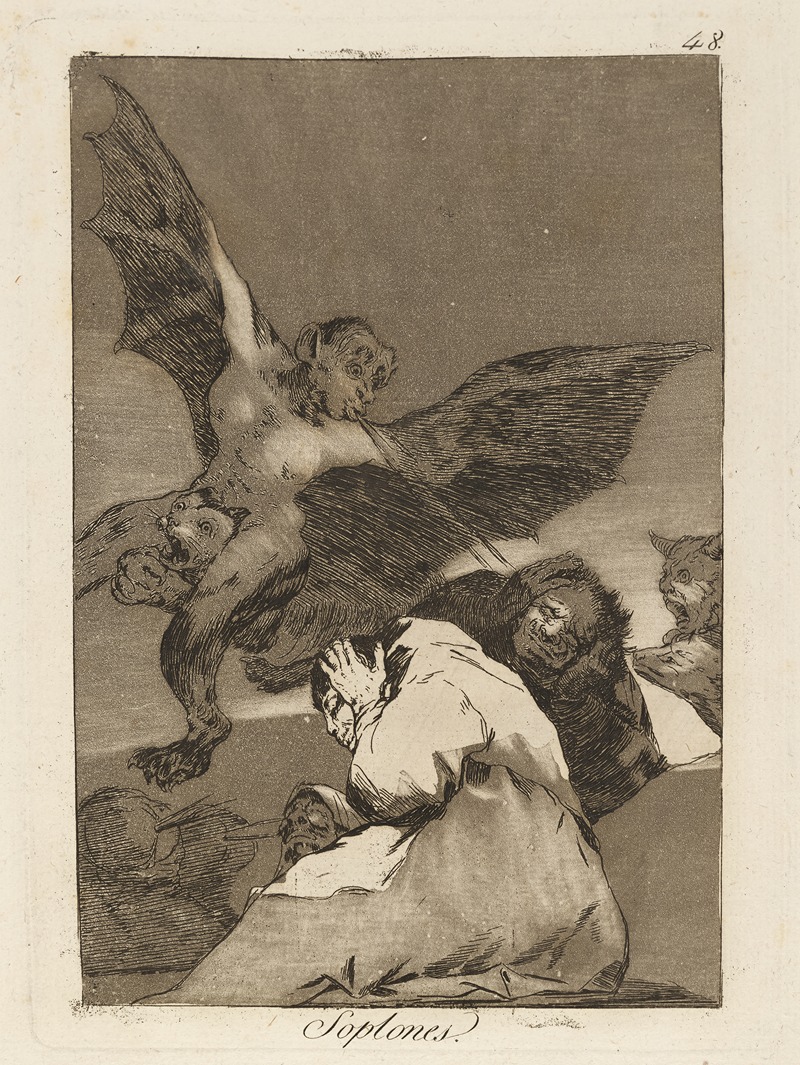
Soplones.
A hand-painted replica of Francisco de Goya’s masterpiece Soplones., meticulously crafted by professional artists to capture the true essence of the original. Each piece is created with museum-quality canvas and rare mineral pigments, carefully painted by experienced artists with delicate brushstrokes and rich, layered colors to perfectly recreate the texture of the original artwork. Unlike machine-printed reproductions, this hand-painted version brings the painting to life, infused with the artist’s emotions and skill in every stroke. Whether for personal collection or home decoration, it instantly elevates the artistic atmosphere of any space.
Francisco de Goya, a prominent Spanish painter and printmaker, is renowned for his profound impact on the art world during the late 18th and early 19th centuries. Among his extensive body of work, the painting titled "Soplones" is one of the lesser-known pieces. Unfortunately, there is limited information available about this specific painting, as it does not stand out as prominently as some of Goya's other works, such as "The Third of May 1808" or "Saturn Devouring His Son."
Goya's oeuvre is characterized by a wide range of subjects and styles, reflecting the tumultuous period in which he lived. His works often delve into themes of social critique, war, and the darker aspects of human nature. Goya's ability to capture the complexities of human emotion and the socio-political climate of his time has cemented his status as a pivotal figure in art history.
"Soplones," like many of Goya's works, is believed to be part of his exploration of human behavior and societal norms. The term "soplones" can be translated to mean "informers" or "snitches," suggesting that the painting may depict themes of betrayal or deceit. This aligns with Goya's interest in the darker sides of human nature and his frequent critique of societal and political issues.
Goya's artistic style evolved significantly over his career, transitioning from the Rococo influences of his early work to a more expressive and sometimes stark realism. His later works, particularly the "Black Paintings," are noted for their haunting and often disturbing imagery. While "Soplones" is not classified among the "Black Paintings," it may share thematic elements with these later works, reflecting Goya's ongoing interest in the complexities of human psychology and morality.
Throughout his career, Goya was deeply affected by the political upheavals of his time, including the Peninsular War and the subsequent changes in Spanish society. These events had a profound impact on his work, leading him to produce art that was both a reflection of and a commentary on the world around him. His ability to convey the emotional and psychological impact of these events is a hallmark of his work.
Despite the lack of specific information about "Soplones," it can be appreciated within the broader context of Goya's artistic legacy. His work continues to be studied and admired for its technical skill, emotional depth, and insightful commentary on the human condition. Goya's influence extends beyond his own time, impacting countless artists and movements that followed.
In summary, while detailed information about "Soplones" is scarce, it remains a part of Francisco de Goya's rich and varied body of work. His paintings, including this one, offer a window into the complexities of the human experience and the societal issues of his era, ensuring his place as a significant figure in the history of art.








